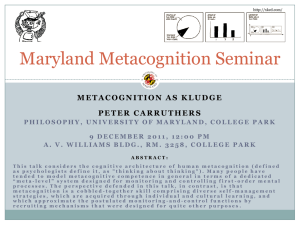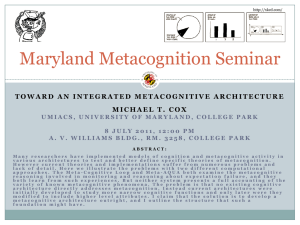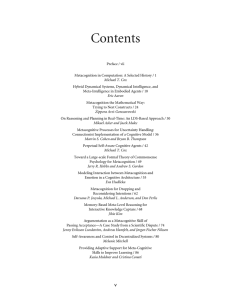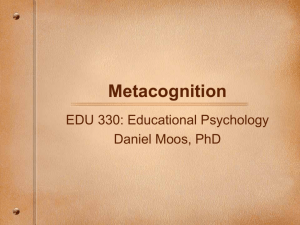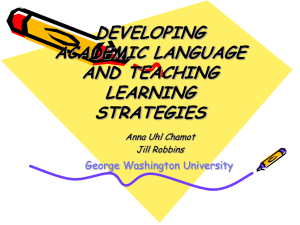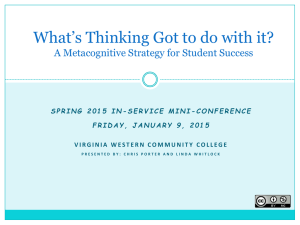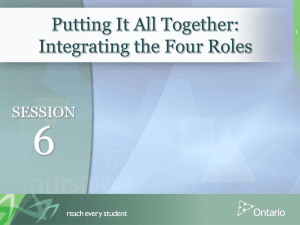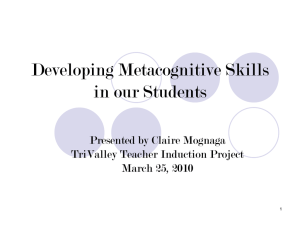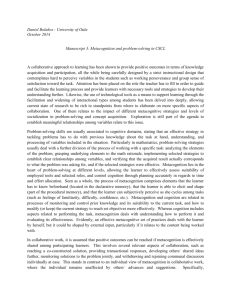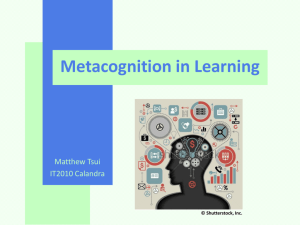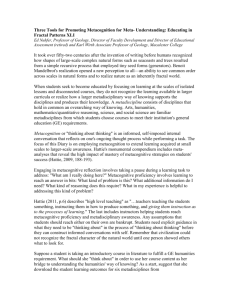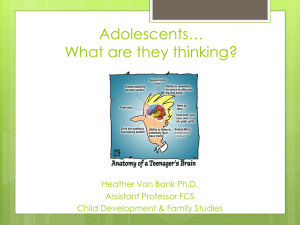Metacognition
advertisement
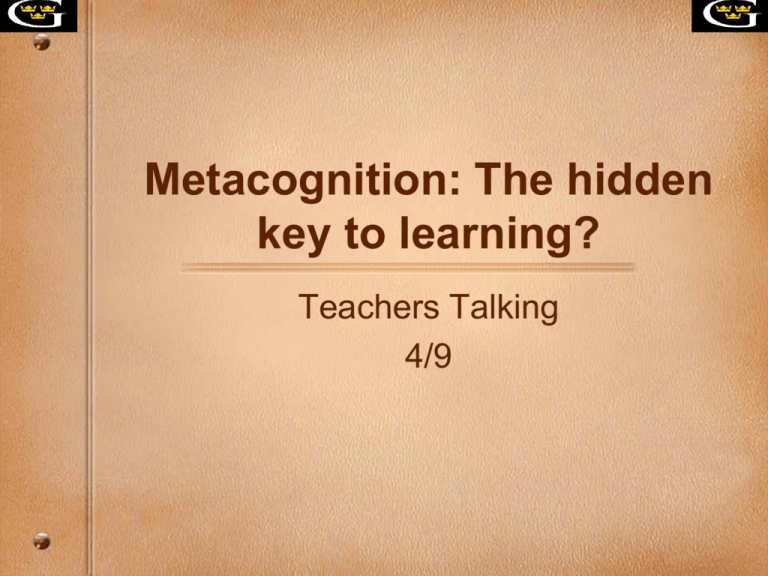
Metacognition: The hidden key to learning? Teachers Talking 4/9 What is Metacognition? Case Studies Tanner, 2012 Imagine two students from your course independently visit your office the week after the first exam. Both students: Are majors from your department. Attend class regularly/submit assignments on time. Appear eager, dedicated, and interested. What is Metacognition? Case Studies, cont Tanner, 2012 Student #1 Expresses happiness that the exam was on a Monday, because that allowed a lot of time to prepare the previous weekend. Started studying after work on Saturday evening and did not go out with friends that night. Reread assigned textbook material/ made flashcards of the bold words in the text. Feels that she should have done well on the test because she studied all Saturday night and all day on Sunday. Wants you to know that she studied really hard, so she should get a good grade on the exam. What is Metacognition? Case Studies, cont Tanner, 2012 Student #2 Reviewed PowerPoint slides each evening after class. Compared the ideas in the PowerPoint slides with the information in the textbook to see how they were similar and different. Identified places in which things seemed not to agree and/or were confusing; kept a list of confusions. Brought them to weekly study group with peers from her course lab section. Attends office hours to ask you about a couple of things that were still confusing. Tall in the the saddle Metacognition in Theory On average, teachers present content about an average of 110 word per minute during a lecture On average, students can write an estimated 17 words per minute Metacognition in Practice Metacognition in Reality Not just another “education” buzz word… We know it is incredibly important in learning… •Over 35 years of research (Flavell, 1979) •Supported in diverse areas of research: Cognitive Psychology, Educational Psychology, Learning Sciences •Personal commitment and consistency of findings: 28 of my 30 published journal articles are based on studies that used metacognition to explain learning Statistically significantly predicted learning outcomes •Accessible instructional strategies for supporting metacognition Metacognitive Support (I) Exit Cards I understand…. I do NOT understand…. Metacognitive Support (II) SRL prompts Many UGs do not self-regulate their learning Planning Questions (before learning): What do you already know about ______? Monitoring questions (during learning): What have you learned so far? What questions do you have and/or is there anything you do not feel like you understand? Reflection (after learning): What did you learn about _______? Metacognitive Support (III) KWL Charts Provide opportunities for students to express: what they know (K); wants to know (W); has learned (L) Metacognitive Support (IV) Metacognitive Note-taking Dynamic interplay between content & understanding Metacognitive Support (V) Wrappers Surrounds existing assignment/activity and encourages metacognition Lecture wrappers: 3 important points Exam wrappers: Predict exam performance, describe study strategies; reflect and modify Homework wrappers: Predict difficulty, reflect and modify Metacognitive Support: Discussion 1. 1. What strategies do you use to support students’ “thinking about their thinking”? Why do you use these strategies? How do you know if they are effective? Which of the discussed metacognitive strategies would be helpful in your courses?
